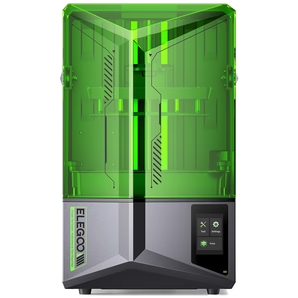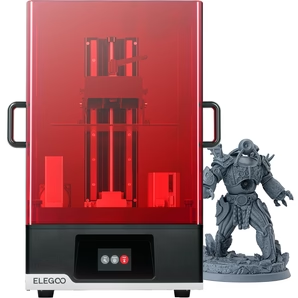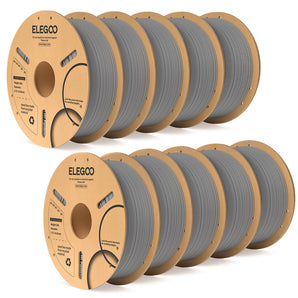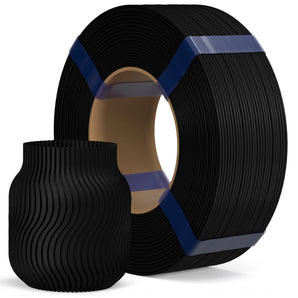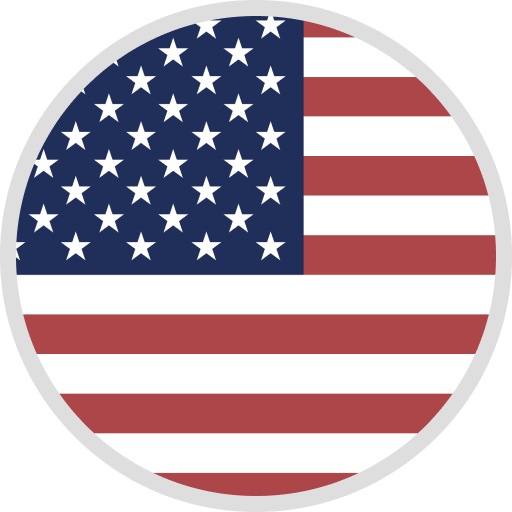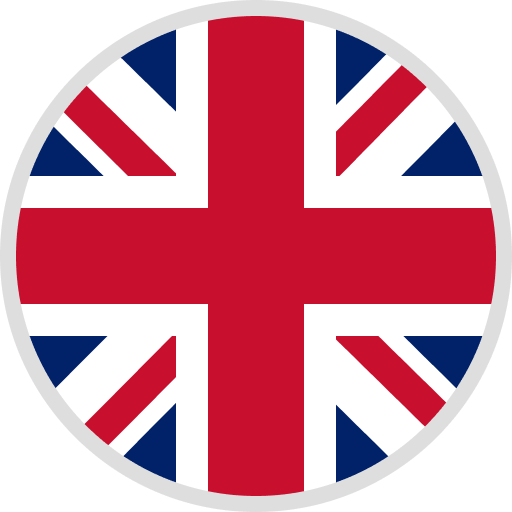3D Printing in the Toy Industry: Creating Unique Play Experiences
In recent years, 3D printing has revolutionized numerous industries, with the toy industry being no exception. This innovative technology has opened the door to a new world of unique play experiences, offering unprecedented levels of customization and creativity.
Among the various 3D printers available, our ELEGOO Neptune 3 Max stands out as ideal for printing toys, thanks to its large build volume, high precision, and user-friendly interface, making it perfect for creating everything from intricate action figures to complex puzzles.
In this blog post, we will explore how 3D printing is reshaping the world of toys, from action figures to puzzles, and delve into the benefits of 3D-printed toys, including their educational value and sustainability.
The Emergence of 3D Printing in the Toy Industry
The integration of 3D printing in the toy industry marks a significant shift from traditional manufacturing methods. This technology allows for the rapid prototyping and production of toys, reducing the time and cost associated with bringing new products to the market.
The ability to swiftly iterate designs means that toy manufacturers can respond quickly to market trends and consumer feedback, driving innovation in toy design.
Unique Play Experiences with 3D Printing
One of the most exciting aspects of 3D printing in the toy industry is the creation of unique play experiences. This technology enables the development of toys that are tailored to the individual preferences and interests of children.
For instance, customizable toys can be designed to reflect a child’s favorite colors, characters, or themes, making playtime more engaging and personal. This level of personalization was once a dream, but with 3D printing, it's now a reality.
Personalized Toy Design: A New Frontier
Personalized toy design stands at the forefront of this technological revolution. 3D printing empowers both manufacturers and consumers to design toys that cater to specific interests or educational needs.
For example, 3D-printed action figures can be customized to resemble historical figures for educational purposes, or to reflect diverse backgrounds, promoting inclusivity and representation in play.

Educational 3D-Printed Toys: Learning Through Play
Educational 3D-printed toys represent a significant leap forward in playful learning. These toys are designed not just for fun but also to stimulate cognitive development and creativity.
For instance, 3D-printed puzzles challenge children’s problem-solving skills and encourage creative thinking. By integrating learning objectives into toy design, 3D printing paves the way for a more immersive and impactful educational experience.
Sustainable Toy Manufacturing: A Green Revolution
Sustainability is another key benefit of 3D-printed toys. Traditional toy manufacturing often involves the use of non-recyclable materials and generates significant waste. In contrast, 3D printing allows for the use of eco-friendly materials, such as biodegradable plastics, and produces less waste by printing only what is needed.
This approach not only reduces the environmental impact but also educates children about the importance of sustainability.
Creative Play with 3D-Printed Puzzles
3D-printed puzzles exemplify the blend of creativity and complexity that this technology brings to toy design. Unlike traditional puzzles, 3D-printed versions can take on intricate and unusual shapes, offering a more challenging and engaging experience.
This not only makes for a fun activity but also fosters spatial awareness and fine motor skills development.
The Future of Toy Design: Endless Possibilities
Looking towards the future, the possibilities of 3D printing in toy design are virtually limitless. As technology continues to evolve, we can expect to see even more innovative and complex toys. This evolution will likely continue to blur the lines between play and education, as well as between consumer and creator, in the toy industry.
Toy Industry Innovation: A New Era
The toy industry is entering a new era of innovation, driven by 3D printing technology. This shift is not only changing how toys are made but also how they are conceptualized and experienced. It’s an exciting time for both toy manufacturers and consumers, as the boundaries of imagination are continually expanded.
Benefits of 3D-Printed Toys: Beyond Imagination
The benefits of 3D-printed toys extend beyond the ability to customize and personalize. These toys are often more durable and safer, as they lack the small, detachable parts found in traditionally manufactured toys. Moreover, 3D printing enables the creation of designs that were previously impossible or too costly to produce, leading to a new era of innovation in toy design.
Playful Learning with 3D Printing: A Bright Future
3D printing holds the potential to transform the way children learn through play. By combining educational content with engaging designs, 3D-printed toys can make learning more enjoyable and effective. As this technology becomes more accessible, we can expect to see a continued fusion of education and play, shaping the minds and imaginations of future generations.
Conclusion
3D printing in the toy industry is more than just a technological advancement; it's a gateway to a world of imagination, creativity, and sustainable practices.
As we embrace these unique play experiences, we not only enrich the lives of children but also pave the way for a future where learning and play go hand in hand. The toy industry's adoption of 3D printing is just the beginning of a journey towards more personalized, educational, and eco-friendly play experiences.


































